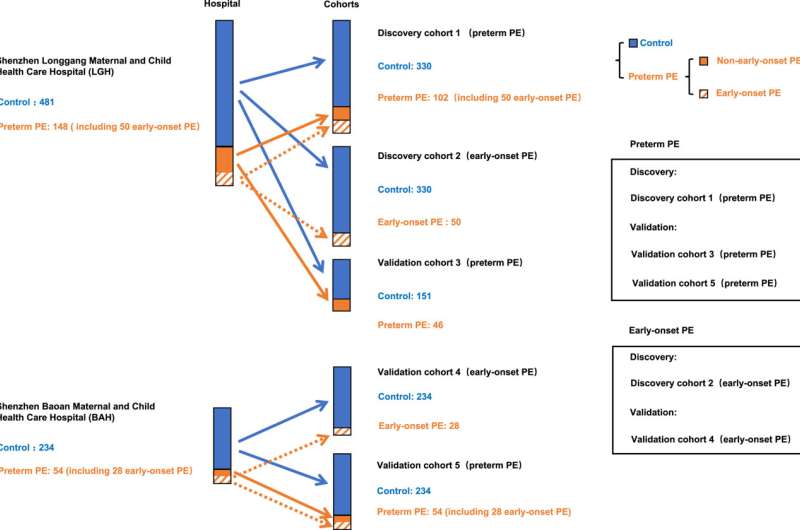This article has been reviewed according to Science X's editorial process and policies. Editors have highlighted the following attributes while ensuring the content's credibility:
fact-checked
peer-reviewed publication
proofread
How cell-free RNA could revolutionize preeclampsia diagnosis

Preeclampsia is a serious pregnancy disorder, marked by high blood pressure and the presence of proteins in urine, affecting between 2% and 4% of pregnant women worldwide, leading to about 46,000 maternal deaths and about 500,000 fetal and newborn deaths each year.
The heterogeneity and complexity of preeclampsia make it difficult to predict risk and develop treatments. A recent study led by BGI Genomics Clinical Research Senior Manager Dr. Zhou Si and a team of scientists, published in the American Journal of Obstetrics and Gynecology, has shed light on a potential diagnostic method for this disorder through plasma cell-free RNA (cfRNA).
CfRNA is released from cells into the bloodstream, and it can be used to study a variety of diseases, including preeclampsia. cfRNA encompasses various RNA biotypes such as mRNAs, miRNAs, and lncRNAs.
In this study, the researchers analyzed cfRNA from 917 pregnancies—715 healthy pregnancies and 202 pregnancies affected by preeclampsia before symptom onset.
Key findings include:
- Detected 77 genes, including messenger RNA (44%) and microRNA (26%), that were differentially expressed in healthy mothers and mothers with preterm preeclampsia before symptom onset.
- Developed two classifiers for predicting preterm preeclampsia and early-onset preeclampsia before diagnosis based on 13 cell-free RNA signatures and two clinical features (in vitro fertilization and mean arterial pressure), respectively.
- Demonstrated for the first time that messenger RNA, microRNA, and long noncoding RNA can simultaneously serve as potential biomarkers of preeclampsia, holding the promise of preventing preeclampsia in the future.
- Abnormal cell-free messenger RNA, microRNA, and long noncoding RNA molecular changes help elucidate preeclampsia's pathogenic determinants.
The observations of this study notably extend the current knowledge in this field, showing that combinations of different RNA biotypes and two clinical features are associated with higher accuracy in preeclampsia risk prediction, thereby opening new therapeutic windows to effectively reduce pregnancy complications and fetal morbidity.
BGI Genomics will continue to take advantage of multi-omics technologies to facilitate research related to maternal and infant health to bring more possibilities for prenatal testing of genetic disorders.
This project follows relevant regulations related to biological and medical research and has been approved by the company's Ethics Committee.
More information: Si Zhou et al, Noninvasive preeclampsia prediction using plasma cell–free RNA signatures, American Journal of Obstetrics and Gynecology (2023). DOI: 10.1016/j.ajog.2023.05.015




















